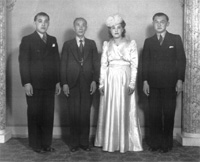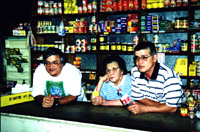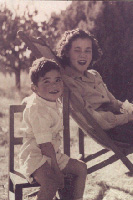Wing Hing Long: From store to museum
| |||||||||||
Documents The Wing Hing Long Archives have a variety of documents which tell stories about the goods and services provided by the store, the people who worked there, other business interests of Lowe family members and Chinese community networks which stretched across the state and to Hong Kong and China. | |||||||||||
A letter in Chinese and on Wing Hing Long letterhead from J.J. Lowe to Mr Kwok Chuen of the Wing On Company in Hong Kong. The date is about 1936. The letter concerns arrangements for the sponsoring of J.J. Lowe's nephew to come to Australia. |
| ||||||||||
People: Lowe and Pratt Families The people directly associated with Wing Hing Long included owners and their families, employees and customers. Their experiences and memories offer different stories about the store, its place in their lives and the history of Tingha. Local Tingha resident, Alma Payne, whose late husband Athol (Dink) Payne was a long time employee of Wing Hing Long, for example, observed: You could buy shoes, and clothing, and everything .. You didnt need to go to town [Inverell] You didnt have to go anywhere. Mavis Pratt, owner of the store from the early 1950s and daughter of Jack Joe and Fong Quain Lowe who owned the store prior to that, remembers how the store was the focus of her life. As a child and adolescent she worked there after school, as an adult it provided the livelihood for her family. Her son, John Pratt, recalls that the tradition continued: We were shop kids We basically went to school, came home, worked in the shop. Went to bed. Got up, go to school, come back and work in the shop.
Jack Joe Lowe was born in Guangdong Province, China, and arrived in Cooktown, Queensland in 1900 aboard the S.S. Empire. Prior to his arrival in Australia, he had spent about 8 years in Hong Kong and declared that, while there, he worked as a clerk. In Australia he spent time in Queensland, Sydney, Inverell and Gunnedah (Connadilly Street) before moving to Tingha in about 1914 with his first wife, Fong Quain Lowe and his eldest son, Edgar (b.1914 in Gunnedah). References: | |||||||||||
|
| ||||||||||
Employees In the early twentieth century, Wing Hing Long employed a number of local residents including Chinese-Australians and a number of overseas born Chinese. By the 1950s, the store still employed a number of staff. John Pratt recalled: There were five full timers here, even in those days. Peggy Roberts used to work up in the cash office up top... Billy Single ... worked in here [inside the store]. Athol Payne used to also work in here but he used to go out and get the orders ... and old Athol would go round on his pushbike and get the orders.
| |||||||||||
Bibliography Books and Articles Brown, Helen. Tin at Tingha, The Author, Armidale, 1982. Brown, Helen. 'Pioneer settlement and mining at Tingha.' Armidale and District Historical Society Journal 36, 1993, pp. 54-61. Collins, Jock et. al. A Shop Full of Dreams: Ethnic small business in Australia, Pluto Press, Sydney, 1995. Kingston, Beverley. Basket, Bag and Trolley: A history of shopping in Australia, Oxford University Press, Melbourne, 1994. Loh, Morag and Winternitz, Judith. Dinky-Di: The contributions of Chinese immigrants and Australians of Chinese descent to Australias defence forces and war efforts, Australian Government Printing Service, Canberra, 1989. Markus, Andrew. Explaining the treatment of non-European immigrants in nineteenth century Australia, Labour History, 48, May 1985, pp. 86-91. Schofield, Claire. Bundarra: Stepping stone of the Gwydir, The Author, Inverell, 1979. Stacker, Julie and Stewart, Peri (compilers), Chinese Immigrants and Chinese-Australians in NSW, Australian Archives, Canberra, 1996. Symes, James. Report on an excursion to Elsmore, Tide of Time (Inverell and District Historical Society newsletter/journal) 2, June 1968, pp.3-4. Van Leeuwen, Michael. New gold mountain - the Chinese at Rocky River.' Armidale and District Historical Society Journal 27, 1984, 23-28. Wiedemann, Elizabeth. 'Tin fever ... the Inverell district in the eighteen seventies', Tide of Time, 6, 1972, pp. 3-10. Wiedemann, Elizabeth. World of its Own:Inverells early years 1827-1920, Devill Publicity, Inverell, 1981. Wiedemann, Elizabeth. Holding Its Own: The Inverell district since 1919. Inverell, Inverell Shire Council, 1998. Wilton, Janis. Hong Yuen: A country store and its people, Armidale CAE and Multicultural Education Coordinating Committee, NSW Department of Education, 1989. Wilton, Janis. 'Identity, racism and multiculturalism: Chinese-Australian responses' in R. Benmayor and A. Skotnes (eds), International Yearbook of Oral History and Life Stories, Oxford University Press, Oxford, pp.85-100. Wilton, Janis. Chinese whispers from northern New South Wales, History Today, (UK), 47/11, November 1997, pp. 45-51. Wilton, Janis. Chinese stores in rural Australia in Kerrie MacPherson (ed.), Asian Department Stores, Curzon Press, Richmond, Surrey, 1998, pp.90-113. Wilton, Janis. The walls speak, dont they? Heritage places and contested memories: a case study, Oral History Association of Australia Journal, 22, 2000, forthcoming. Zhao, Karl. Memories of a difficult past, History (Magazine of the Royal Australian Historical Society), 63, March 2000, pp.10-11. Theses and reports Campbell, Elizabeth. A history of tin mining in the Inverell District 1871-1914 and its effects on the development of the town and district. BAHonours thesis, University of New England, 1968. Hawley, Grant Sydney. Small town community attitudes: a geographical study of the tin mining townships of Tingha and Emmaville. BAHonours thesis, Department of Geography, University of New England, 1973. Miles, Jinx; Brooks, Ken and Wilton, Janis. Conservation and Management Plan for Wing Hng Long and Co Store, Tingha. National Trust of Queensland prepared for the NSW Heritage Office, 2000. Williams, Michael. Chinese settlement in NSW: a thematic history. Report for the Heritage Office of NSW, Sydney, 1999. Wilton, Janis. Chinese Voices, Australian Lives: oral history and the Chinese contribution to Glen Innes, Inverell, Tenterfield and surrounding districts during the first half of the twentieth century. PhD, University of New England, 1996. Newspaper and Magazine Articles Fitzgibbon, Wendy. 'Grant to turn Tingha store into museum', Armidale Express, 18 February 1998, p.2. Glascott, Joseph. In Tingha they tied the Chinese by their pigtails, Sydney Morning Herald, 30 April 1984. 'Historic "corner store" prepares to pull tourists', Armidale Express, 20 November 1998, p.7. McKenzie, Andrew. 'After 35 years, time to take stock', Brisbane Courier Mail, 13 December 1984. Meade, Kevin. 'A little local history leaves Tingha', The Australian, 30 December 1996. 'New future for piece of history', The Inverell Times, 9 January 1998, p.6. O'Brien, Geraldine. 'Last of the proper old shops gives town spirit', Sydney Morning Herald, 18 October 1997, p. 3 'Tingha museum', The Armidale Independent, 19 February 1998, p.2. 'The Wing Hing Long store: exploring our Chinese heritage', Heritage NSW (quarterly newsletter of the NSW Heritage Office and Heritage Council of NSW), 5/1, April 1998, p. 13. Other Sites and Scenes, (CD-Rom) NSW Department of Education and Heritage Office of NSW, Sydney, 1999. Wilton, Janis. Wing Hing Long inventory entry. NSW State Heritage Register. http://www.heritage.nsw.gov.au/ | |||||||||||

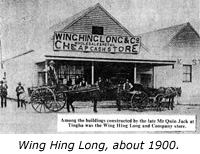 Wing Hing Long was established in the late nineteenth century as one of a number of stores servicing the tin mining communities of the district. Tin was first discovered in the early 1870s and saw a boom in population and productivity which peaked in the late nineteenth century and which slowly declined as the mining booms went bust.
Wing Hing Long was established in the late nineteenth century as one of a number of stores servicing the tin mining communities of the district. Tin was first discovered in the early 1870s and saw a boom in population and productivity which peaked in the late nineteenth century and which slowly declined as the mining booms went bust.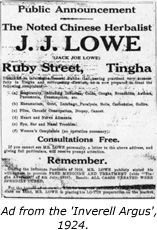 An advertisement in a 1900 edition of the Inverell Times described the services offered by Wing Hing Long:
An advertisement in a 1900 edition of the Inverell Times described the services offered by Wing Hing Long: This was a store with a sound business and good prospects for the future.
This was a store with a sound business and good prospects for the future. n the premisses of Wing Hing Long. They used the residence at the back of the store, and rooms near the store office at the rear of the hardware section.
n the premisses of Wing Hing Long. They used the residence at the back of the store, and rooms near the store office at the rear of the hardware section. In early 1998 the store and most of its contents were purchased by Guyra Shire Council for community management as a living museum. This transfer of ownership was achieved with the assistance of the Golden Threads Project, the commitment and negotiating skills of Ron Pickering and the Tingha community, the cooperation of the Pratt family, and the financial support of the NSW Heritage Office and the NSW Ministry for the Arts.
In early 1998 the store and most of its contents were purchased by Guyra Shire Council for community management as a living museum. This transfer of ownership was achieved with the assistance of the Golden Threads Project, the commitment and negotiating skills of Ron Pickering and the Tingha community, the cooperation of the Pratt family, and the financial support of the NSW Heritage Office and the NSW Ministry for the Arts.
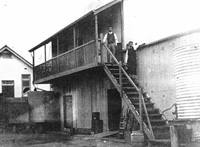
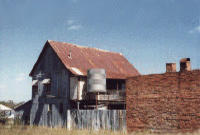
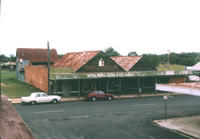
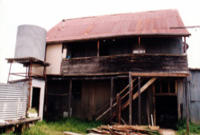
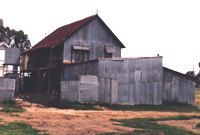
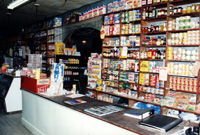


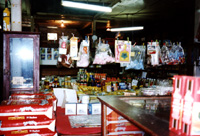


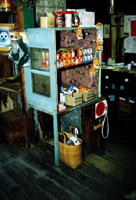
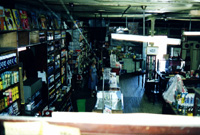
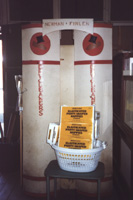
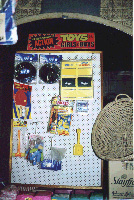



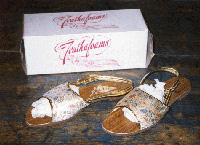



 Fong Quain Lowe and Jack Joe Lowe about 1912.
Fong Quain Lowe and Jack Joe Lowe about 1912.